Q4 Outlook: A New Cycle?
 The economy might be in the early phase of recovery following the COVID-19 recession, which might signal a new cycle. This implies a period of low-inflation and low-interest-rate growth. In an environment that favours more equities over bonds, and after such a rapid rebound, an equity market correction is usually expected. The U.S. election is creating uncertainty on tax regimes, government regulations and the re-escalation of China/U.S. trade tensions. Beyond this, the market looks set for a rotation towards cyclical stocks. This also implies a rotation toward non-U.S. stocks which benefit Europe and Emerging Market equities.
The economy might be in the early phase of recovery following the COVID-19 recession, which might signal a new cycle. This implies a period of low-inflation and low-interest-rate growth. In an environment that favours more equities over bonds, and after such a rapid rebound, an equity market correction is usually expected. The U.S. election is creating uncertainty on tax regimes, government regulations and the re-escalation of China/U.S. trade tensions. Beyond this, the market looks set for a rotation towards cyclical stocks. This also implies a rotation toward non-U.S. stocks which benefit Europe and Emerging Market equities.
The equity markets, particularly the Technology sector, are exhibiting valuations typically seen after several years of strong returns while the bond market spreads are narrow. This indicates the speed with which the market has recovered. Another reason for this low yield environment is the ultra-low, risk-free government bond and central bank asset purchases to help the economies boost their recovery.
The turning point will be once the economies hit full capacity which means unemployment has fallen and inflation has started to rise. At this point, Central Banks will indicate that higher interest rates are on the way and the bond yields will rise. Low yields have allowed equity markets to move higher as investors were moving towards riskier assets with better potential of capital gains. Hence why, rising bond yields will put equity prices under pressure.
Government debt levels especially in developed economies has increased due to the support measures granted during the pandemic lockdown. Now, it depends on how quickly the governments are in a hurry to repay those debts. Having said that, the current low-borrowing costs makes debts more sustainable. Interest rates are lower than the growth trend of the GDP which helps the economy to recover more smoothly as we transition into the fourth quarter.
Analysts are looking at three major factors, amongst others, that could alter the market trend in the next quarters. These are the outperformance of U.S stocks versus non-U.S. stocks, the performance of growth and value stocks in the recovery period and the U.S. dollar currency value.
The dollar benefits from inflows in the U.S stock market and positive interest rates. It is showing signs that it is moving in line with the market were it usually goes up in times of uncertainty and declines when uncertainty eases. A clear case of this was during the coronavirus crisis and the subsequent market recovery.
The rebound of the stock market after the coronavirus crisis, has caught several investors by surprise. In the initial recovery phase, we usually see cyclical and value stocks perform well from a recession, but not this time. The reason being was due to the strong performance of the Technology equities, which are generally considered as Growth stocks, which benefited from the lockdown enforcements. One of the two main benefits which contributed to this high demand in the Technology sector was the decline in government bond yields, as the bond prices went up. Investors consider Technology stocks for their future earnings and the decline in bond yields made that future earnings more valuable at present. The second evident reason was the boost in turnover experienced by such companies, as consumers shifted more than ever towards online purchases, made use of virtual communication and watched more streaming services.
The risks the equity markets are now facing, during this last quarter of 2020, are the renewed lockdowns because of the increasing number of Covid-19 virus infections, as well as the uncertainty brought about by the US presidential elections. As infection rates are on the rise and with the winter season approaching, this could result in a severe second wave. This fear has caused a correction in the market recently. However, this was in some ways offset by the positive news of a prospective vaccine development expected in the first quarter of next year.
The close tie between the two candidates in the US election can also have a drastic effect on the market. On one side, we have the incumbent president that would likely benefit the US stock market as he would avert tax and protect US companies. On the other hand, the Democratic candidate would probably benefit more the International stock market with more foreign trade relations.
What is expected in the last quarter of 2020? We hope for a second round of significant lockdowns to be avoided, additional fiscal stimulus initiatives to be introduced, and a US presidential election outcome that benefits the market. Certainly, the last quarter will be characterised with a lot of uncertainty and market volatility. Investors should be very cautious in such a volatile market but at the same time not miss out on potential opportunities. Using a cost averaging strategy could be one way of doing so, a strategy in which an investor divides up the total amount to be invested across periodic purchases of their investment in an effort to reduce the impact of volatility on the overall purchase.
Adrian Mifsud, Cefa, is an Investment Advisor at Jesmond Mizzi Financial Advisors Limited. This article does not intend to give investment advice and the contents therein should not be construed as such. The Company is licensed to conduct investment services by the MFSA and is a Member of the Malta Stock Exchange and a member of the Atlas Group. The directors or related parties, including the company, and their clients are likely to have an interest in securities mentioned in this article. Investors should remember that past performance is no guide to future performance and that the value of investments may go down as well as up. For further information contact Jesmond Mizzi Financial Advisors Limited of 67, Level 3, South Street, Valletta, on Tel: 2122 4410, or email [email protected]
